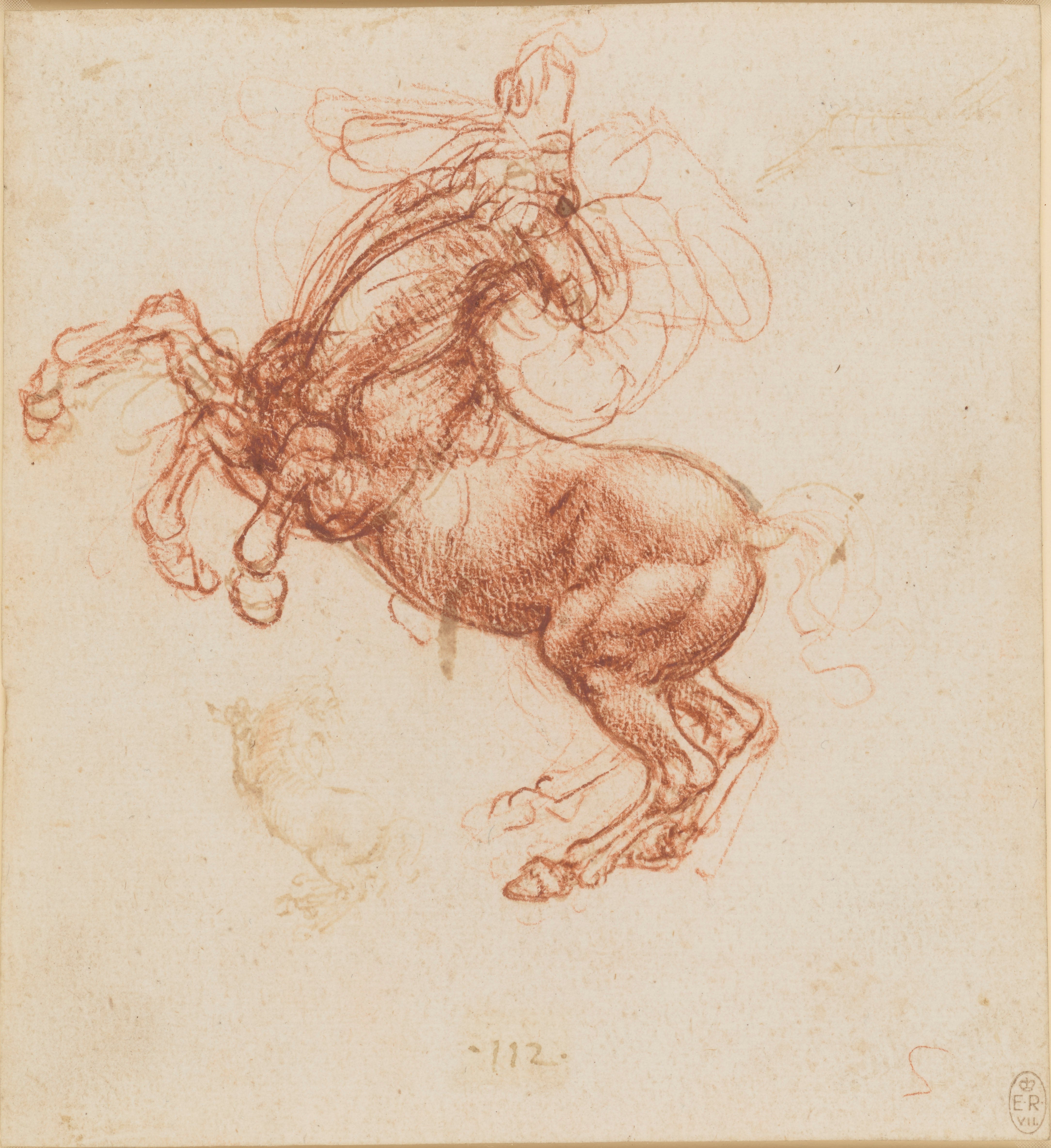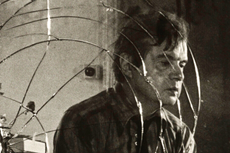How the Renaissance giants created serenely beautiful art amid a backdrop of political chaos
In 1504, three huge figures of the Renaissance era found themselves in Florence, then a city in turmoil. A fascinating new exhibition puts that rare period of artistic overlap under the spotlight

There’s a widely held belief that art and culture thrive best in times of stability. Artists have the time and space to pursue their ideas without threat; the rich and powerful can commission palaces and churches, confident there’ll be a decent interval before they’re sacked by the mob.
So, it’s chastening to learn that the art of the Renaissance – painting and sculpture that exudes serenity and harmony – was created against a background of continual warfare and murderous inter-dynastic feuding.
In 1504, the year explored in this fascinating exhibition at the Royal Academy, the three giants of the era – Michelangelo, Leonardo and Raphael – all found themselves in Florence at a time of major turmoil. While the show’s focus is on the artistic and professional chemistry between these three heavyweights, the troubled political context looms frequently into view. The city had banished its leading family, the Medici, following the public murder of its leading member, and there was a marauding French army at its gates. Suddenly, this was a place in urgent need of visual symbols to validate its centuries-old, now embattled democracy.
Far from pooling their talents in this great civic project, the three artists proved just as rivalrous and rancorous as their aristocratic patrons. In a meeting of the city’s artists, convened to decide the position of that great symbol of the Florentine state Michelangelo’s David, Leonardo argued that the younger artist’s work should be placed in an obscure position at the back of the city’s main square, with its famously naked genitals “appropriately covered”. So much for helping a brother artist.
The city fathers unwittingly fuelled this rivalry by commissioning the two artists to produce murals of great Florentine victories practically next to each other in the Palazzo Vecchio – Florence’s town hall. And while the younger Raphael idolised the two older artists, it didn’t stop him from trying to poach their patrons at every turn.
With many key works still in Florence and unable to be moved, the fear was that this show’s account of “this defining moment of the Italian Renaissance” would be text-heavy, with documents and drawings set in fascinating context that requires reading rather than looking.
In fact, the show bends over backwards to be as visual as possible. Wall texts are kept to a bare minimum by the standards of today’s exhibitions, and a good array of works from collections around the world await us throughout – though the curation’s emphasis on somewhat academic art-historical tropes can leave one wanting more in the way of juicy gossip.
The opening display on the fashion for tondi, meaning works in round formats – a trend at its height when these three mega egos collided – is based around Michelangelo’s Taddei Tondo, from the RA’s own collection, his only marble sculpture in the UK. Officially titled The Virgin and Child with the Infant St John, it shows the beatific Madonna cradling the infant Christ who twists his head towards his cousin who holds a goldfinch, a symbol of his Passion – his death and resurrection that are to come. Christ’s turning form exemplifies the notion of contrapposto, the supple twisting of the human form in reaction to the stiffness of medieval sculpture. Yet while the work is unfinished, with much of the surface left rough and raw, the sterile white marble and bland features of the figures make it a difficult work to feel strongly about.
A sheet of scrawled drawings in which Michelangelo attempted to work out the forms of the figures, with the children and the features of Madonna emerging from masses of scratchy lines, gives far more of the sense of intimacy you’d hope for in a show that frames itself in terms of the interaction between artists.
Raphael, meanwhile, who modelled his Bridgewater Madonna (1507-08) on the Taddei Tondo, went one better by involving not one but two examples of contrapposto – anything to upstage his older rival. The positioning of the Virgin and child, so they face each other from different directions but turn their faces towards each other, gives the work the kind of sinuous, sensual flow that made Raphael one of the world’s most admired artists over most of the intervening five centuries.
Presented on its own in the exhibition’s central room, Leonardo’s Burlington House Cartoon (1506-08) is surely one of the greatest drawings ever created with its near life-size figures of Mary seated “side saddle”, as the wall texts put it, on her mother’s knee, while the Christ child signals, again, to his cousin John the Baptist. If there’s nothing surprising in the content, the figures, rendered in masses of blurring charcoal lines, have immense presence. The highlighting in white chalk enhances the serene expressions of the Virgin and children, which are counterpointed by the almost sinister intensity of the mother, speaking into her daughter’s ear, as she points heavenward. While the work’s message is undeniably mystical, there’s something universal, almost homely, in the supportive but slightly overbearing figure of the mother, ready with her lifetime’s worth of advice. The work’s intimacy and humanity leave one feeling far closer to its creator, for my money, than any of his sterile, over-finished paintings, the Mona Lisa included.

If the fragile cartoon’s survival feels little short of miraculous when so many great paintings have been lost, the rest of the show is devoted to works that were never even completed: Michelangelo and Leonardo’s rival battle scenes for the Palazzo Vecchio. If the artists’ intentions for these works are largely a matter of conjecture, the show manages to amass a surprising amount of evidence to bring these legendary and endlessly discussed works to life.
The large drawings representing Leonardo’s Battle of Anghiari and Michelangelo’s Battle of Cascina may be assistants’ copies of long-lost originals by the respective artists – but they more than make up for it in exuberant energy. The copy of Leonardo’s original drawing by an unknown Italian, enlarged and retouched by none other than Pieter Paul Rubens, has all the tumultuous ferocity of one of the Flemish painter’s own hunting scenes. Rearing horses, snarling teeth and slashing scimitars are caught in a whirl of murderous movement.
Bastiano da Sangallo’s drawing “after Michelangelo” shows the Florentine soldiers rushing to ready themselves for battle, arranged over the composition in a mass of twisting limbs and naked torsos, with the emphasis on vibrant pattern rather than a believable arrangement of forms in space.
With the outlines of the figures painted at their actual scale on the gallery’s far wall, and some magnificently muscular drawings of male figures and blurry battle scenes, all by Michelangelo’s own hand, shown alongside, we start to build up a sense of what this extraordinary work would have been like. It’s a reminder of how radical Michelangelo’s ideas can seem even now.
If Leonardo’s drawings of rearing horses feel more conventional, again it’s a very spontaneous sheet of studies of Horses, Soldiers and the Angel of the Assumption, with the angel looking almost goofy, that really brings the past and one of the most admired but most remote figures in Western culture into focus.
While the show sets up the context for a huge artistic showdown, much of its analysis rests on nitpicking art-historical forensics, what else at this distance can we reasonably expect?
The big three of the High Renaissance may not exert the influence they once did but advance ticket sales for this exhibition suggest they still have a powerful hold over the public imagination. The star exhibits – the Taddei Tondo and Burlington House Cartoon – will hardly be revelations to most British viewers (the latter can generally be seen free in the National Gallery) but this show certainly offers a journey into the world of these artists. And it’s often the smallest and most apparently inconsequential exhibits that are the most transporting.
‘Michelangelo, Leonardo, Raphael’ is at the Royal Academy from 9 November to 16 February; royalacademy.org.uk
Join our commenting forum
Join thought-provoking conversations, follow other Independent readers and see their replies
Comments


Bookmark popover
Removed from bookmarks